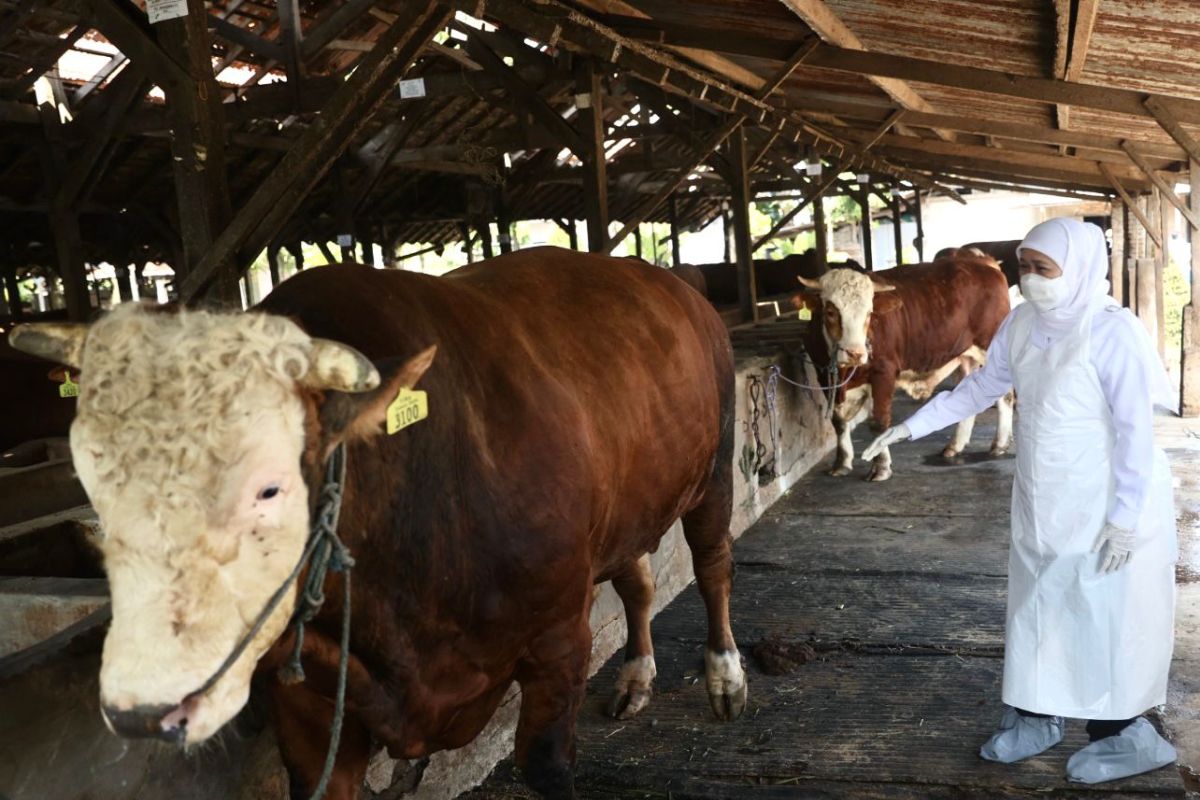Surabaya, East Java (ANTARA) - East Java Governor Khofifah Indar Parawansa has instructed district heads and mayors in the province to check and monitor the sales centers of Qurbani or sacrificial animals amid the foot-and-mouth disease (FMD) outbreak.
"In the midst of the outbreak of the foot-and-mouth disease in livestock, we want to ensure that the people of East Java can carry out worship (activities) smoothly," she said here on Monday.
Parawansa expressed the hope that the FMD outbreak will not disrupt Muslims' worship activities during Eid al-Adha, including the animal slaughtering ritual. She also said she hoped that the distribution process of Qurbani animals would run safely and hygienically.
According to the governor, the checking and monitoring of Qurbani animal sales centers is a follow-up to a circular issued by the Ministry of Religious Affairs (Religious Affairs Minister's Circular Number 10 of 2022) regarding guidelines for the implementation of Eid prayer and the slaughter of Qurbani animals for the 2022 Eid al-Adha.
The East Java government also issued the decree of East Java Governor number 188/362/KPTS/013/2022 regarding the emergency status of the foot-and-mouth disease outbreak on May 30, 2022.
In addition, Circular Letter No. 524/6359/122.3/2022 was issued regarding the control and prevention of foot-and-mouth disease in livestock in East Java on May 31.
The governor highlighted that it is crucial for regional heads to make policies to prepare Qurbani animal sales centers that are healthy and free of FMD.
"We always strive to provide a sense of security among the community, especially for Muslims who will celebrate Eid al-Adha," she remarked.
She explained that the circular regulates the implementation of the health protocols for the Eid al-Adha worship and ritual activities, as well as the slaughter and distribution of Qurbani meat.
According to the FMD task force data, as of Saturday (June 25), at least 100,492 animals have been infected with FMD in East Java. The number of active cases has been pegged at 82,056 heads of livestock, consisting of 81,697 cattle, 60 buffaloes, 217 goats, and 82 sheep. Meanwhile, the number of animal deaths due to the disease has been recorded at 563.










